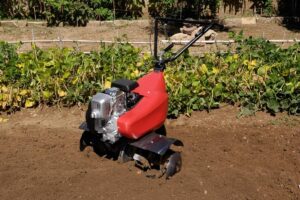Pomegranates are a delicious fruit that common in warm climates and are often enjoyed, after harvest, during the colder months.
If you enjoy pomegranates then you might wonder if you can grow them at home from store bought fruit?
It is possible to grow pomegranates from the seeds of store bought fruit and, if you can provide a warm, sheltered spot outdoors, then you may be able to grow a pomegranate tree that will, in time, produce your very own pomegranates.
You can grow pomegranates from the store
If you’ve eaten a juicy pomegranate, you know how delicious they can be.
Sweet and tart, with a hint of floral flavor, pomegranates are a unique fruit that can add a touch of luxury to any dish.
Fortunately, pomegranates are not just for eating – they can also be grown at home.
Although pomegranates are not typically available as bare-root plants, it is possible to grow them from store-bought fruit.
With a little patience and care, your pomegranate seeds will sprout and grow into healthy plants that will bear fruit for many years to come.
Select a healthy pomegranate from the store
When choosing a pomegranate from the store, there are a few things to keep in mind.
First, look for a fruit that is heavy for its size.
Second, avoid pomegranates that have any cuts or bruises on the skin. These openings can provide an entry point for bacteria.
The fruit should also be a nice deep red color without any green patches.
Finally, be sure to select a pomegranate that is firm to the touch. Soft fruits are overripe and the seeds will not have the same ability to germinate.
Popular live pomegranate plants
Remove the pomegranate seeds from the fruit
Once you have selected a ripe and healthy pomegranate, it’s time to remove the seeds.
Start by cutting the fruit in half around the middle. Next, using your fingers or a spoon, gently scoop out the seeds from each half of the fruit.
Try to avoid removing any of the white membrane that surrounds the seeds as this can decrease the chances of successful germination.
Once all of the seeds have been removed, place them in a strainer and rinse them under cool water. This will remove any residual fruit pulp that may be clinging to the seeds.
Soak the pomegranate seeds
After rinsing, place the pomegranate seeds in a bowl and cover them with water.
Let the seeds soak for 24 hours to help soften the hard outer shell.
This will make it easier for the seedling to emerge when it is time to plant.
Plant the pomegranate seeds
After soaking, drain the water from the bowl and remove any seeds that have floated to the surface.
These seeds are not viable and will not germinate.
Next, fill a planting tray or pot with well-draining potting mix.
Gently press the pomegranate seeds into the soil, being careful not to plant them too deeply.
Cover the seeds with a thin layer of soil and mist them lightly with water.
Place the tray or pot in a warm, sunny location
Pomegranates require full sun to thrive, so be sure to place your planting tray or pot in an area that receives at least 6 hours of direct sunlight each day.
If you live in a cold climate, you may need to place the tray or pot near a south-facing window or under grow lights.
Pomegranates also prefer warm temperatures, so if your home is on the cooler side, you may need to provide additional warmth with a heat mat or seedling heat lamp.

Keep the soil moist
During the germination process, it is important to keep the soil moist but not soggy.
To avoid overwatering, be sure to use a watering can with a fine-mist setting or water the seeds from below by filling a tray with water and allowing the pot to sit in it for a few minutes.
Once the top inch of soil feels dry to the touch, it’s time to water again.
The germination process can take several weeks, so be patient and keep a close eye on the seeds.
You may see some sprouts emerge within a week or two, but it can often take longer for all of the seeds to germinate.
Once the seedlings emerge, thin them out so that only the strongest plants remain.
Caring for your pomegranate plants
From here, continue to care for your pomegranates as you would any other houseplant, water them regularly and fertilize them monthly during the growing season.
Pomegranate trees love sun and will thrive in direct, hot sunshine.
If you live in an area that experiences cold winters then your pomegranate will overwinter indoors near to a sunny window.
They are ideal choices for conservatories, heated greenhouses or orangeries.
Final Words
With care and patience you will be able to grow your own pomegranate trees from seed.
Not only is this a fun and rewarding process, but, with time, care and the right growing conditions and you’ll be on your way to enjoying fresh, homegrown pomegranates.
















